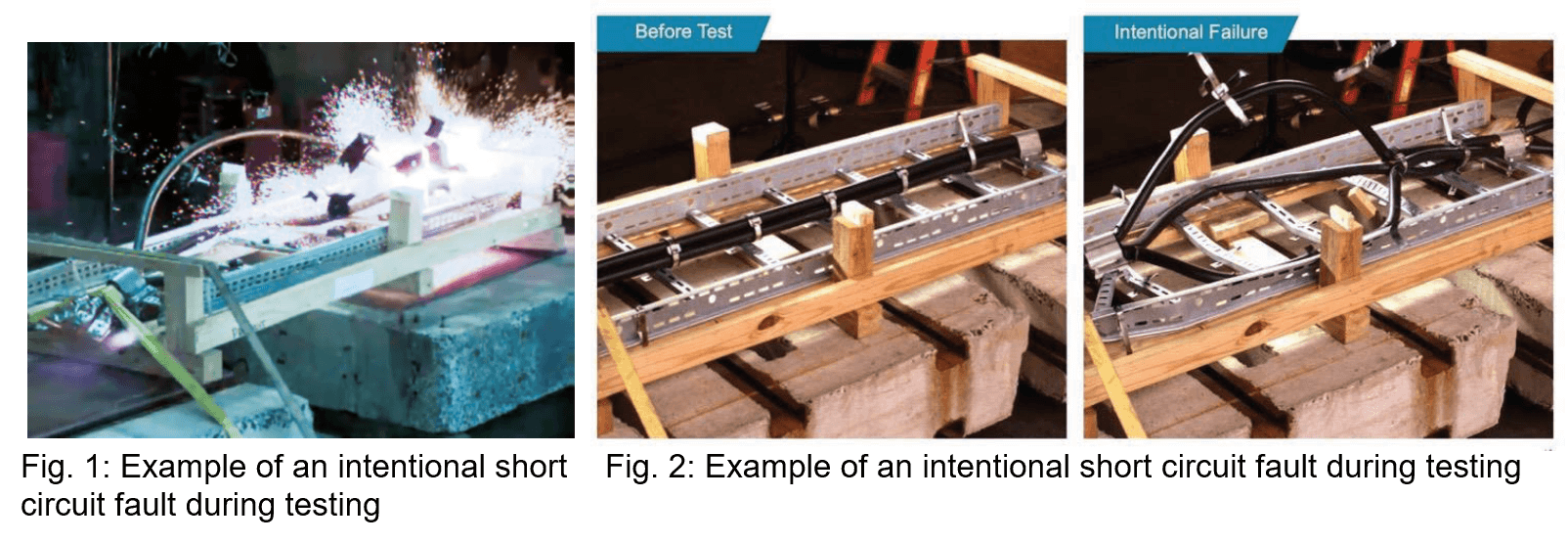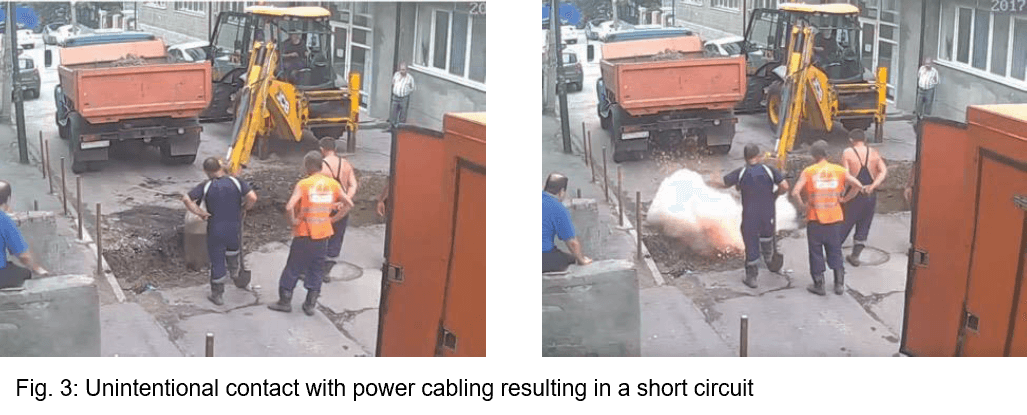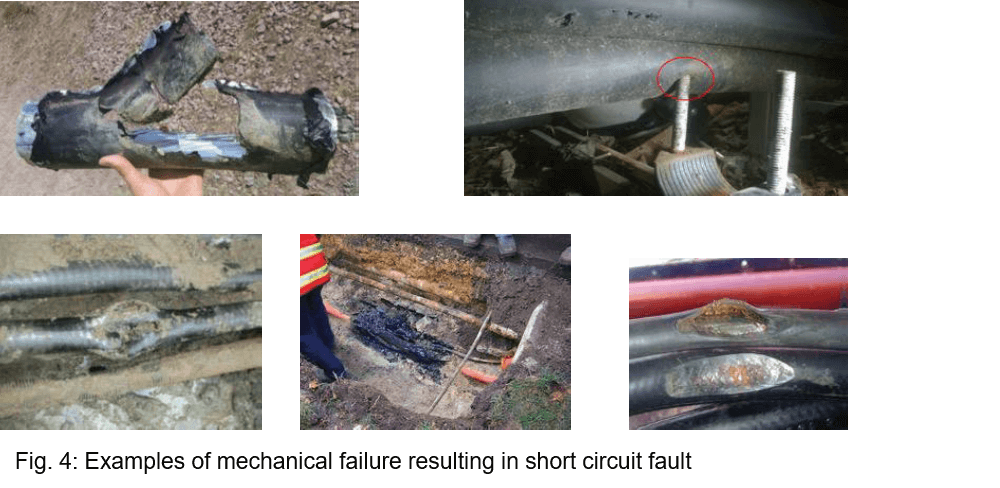Cable Cleats for Short Circuit Protection
- Manufacturing
- During storage prior to delivery
- Transportation to site
- During installation
- While in service
"A device designed to secure cables when installed at intervals along the length of the cables."[/vc_column_text][divider line_type="No Line"][vc_column_text] Although the International Standard does require the manufacturer to classify a material type, it also does not exclude any specific material, nor does it dictate any minimum dimensions or physical attributes. Annex A (informative) in the IEC cable cleat standard provides examples of various cable cleats which include products made from timber, steel, and plastic. There is a variety of designs and methods for ‘securing cables’, such as designs starting at 15mm wide to 150mm wide.[/vc_column_text][image_with_animation image_url="7983" alignment="" animation="Fade In" border_radius="none" box_shadow="none" max_width="100%"][divider line_type="No Line"][/vc_column][/vc_row][vc_row type="in_container" full_screen_row_position="middle" scene_position="center" text_color="dark" text_align="left" overlay_strength="0.3" shape_divider_position="bottom"][vc_column column_padding="no-extra-padding" column_padding_position="all" background_color_opacity="1" background_hover_color_opacity="1" column_shadow="none" column_border_radius="none" width="1/1" tablet_text_alignment="default" phone_text_alignment="default" column_border_width="none" column_border_style="solid"][vc_custom_heading text="The Necessity of Cable Cleats"][vc_column_text]Although there are several demanding tasks, one of the major requirements of a cable cleat is to protect people and equipment in the event of a short circuit on a cable system by restraining and holding the cable in place without damaging it. Electric currents in conductors, which are laid adjacent to one another, produce electro-magnetic fields between the conductors. During a short circuit fault, the electric current turns into a magnetic force and the repulsive force between conductors is proportional to the square of the peak short circuit current. This is then followed by a residual, pulsating, oscillating stress at a frequency of twice the operating frequency, known as the fault RMS. However, it is accepted that the forces at the peak of the fault are the highest, the most instantaneous, and in turn the most destructive, when considering system protection.[/vc_column_text][/vc_column][/vc_row][vc_row type="in_container" full_screen_row_position="middle" scene_position="center" text_color="dark" text_align="left" overlay_strength="0.3" shape_divider_position="bottom"][vc_column column_padding="no-extra-padding" column_padding_position="all" background_color_opacity="1" background_hover_color_opacity="1" column_shadow="none" column_border_radius="none" width="1/1" tablet_text_alignment="default" phone_text_alignment="default" column_border_width="none" column_border_style="solid"][nectar_btn size="small" button_style="regular" button_color_2="Accent-Color" icon_family="none" text="Download Whitepaper" url="https://www.panduit.com/content/dam/panduit/en/landing-pages/short-circuit-protection/D-SSAT02--WW-ENG-ShortCircuitProtectionNFT-WP-6-1-20.pdf"][/vc_column][/vc_row][vc_row type="in_container" full_screen_row_position="middle" scene_position="center" text_color="dark" text_align="left" overlay_strength="0.3" shape_divider_position="bottom"][vc_column column_padding="no-extra-padding" column_padding_position="all" background_color_opacity="1" background_hover_color_opacity="1" column_shadow="none" column_border_radius="none" width="1/1" tablet_text_alignment="default" phone_text_alignment="default" column_border_width="none" column_border_style="solid"][gravityform id="7" title="false" description="false" ajax="false"][/vc_column][/vc_row]


Short Circuit Faults
A short circuit is a low resistance connection between conductors supplying electrical power to a circuit, which results in an excessive current flow in the power source through a ‘short’. When a short circuit occurs, electrical current in the system increases to an abnormally high value while the system voltage decreases to a low value. The ‘short’ rapidly produces electromagnetic forces that send the cables violently repelling against each other, damaging equipment and injuring or even killing personnel.


Common Causes of Short Circuit Faults
A short circuit in the field is an accidental conductive connection between two or more points of a circuit. Electrical power cable failures usually culminate in a short circuit fault between phases and/or between phases and earth (ground). The first stage is that the electrical insulation breaks down. This process can be electrical or thermal degrading the insulation, however in many cases mechanical damage is the process that causes the insulation to breakdown resulting in a fault. Mechanical forces can act on a power cable both externally and internally and a cable can be subjected to mechanical forces at every stage throughout its life including:
- Manufacturin
- During storage prior to delivery
- Transportation to site
- During installation
- While in service




What is a Cable Cleat?
According to the International Electrotechnical Commission (IEC) International standard, a cable cleat is simply:
“A device designed to secure cables when installed at intervals along the length of the cables.”
Although the International Standard does require the manufacturer to classify a material type, it also does not exclude any specific material, nor does it dictate any minimum dimensions or physical attributes. Annex A (informative) in the IEC cable cleat standard provides examples of various cable cleats which include products made from timber, steel, and plastic. There is a variety of designs and methods for ‘securing cables’, such as designs starting at 15mm wide to 150mm wide.


The Necessity of Cable Cleats
Although there are several demanding tasks, one of the major requirements of a cable cleat is to protect people and equipment in the event of a short circuit on a cable system by restraining and holding the cable in place without damaging it.
Electric currents in conductors, which are laid adjacent to one another, produce electro-magnetic fields between the conductors. During a short circuit fault, the electric current turns into a magnetic force and the repulsive force between conductors is proportional to the square of the peak short circuit current. This is then followed by a residual, pulsating, oscillating stress at a frequency of twice the operating frequency, known as the fault RMS. However, it is accepted that the forces at the peak of the fault are the highest, the most instantaneous, and in turn the most destructive, when considering system protection.

Share this article on social media